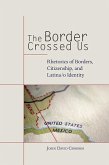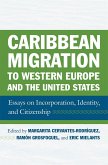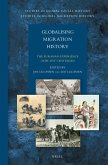In this innovative study, Richard C. Jones analyzes migration patterns from two subregions of north-central Mexico, Coahuila and Zacatecas, to the United States. Jones's findings refute some common assumptions about Mexican migration while providing a strong model for further research. Migrants from Zacatecas have traditionally come from rural areas to California and Illinois. Migrants from Coahuila, on the other hand, usually come from urban areas and have almost exclusively preferred locations in nearby Texas. The different motivations of both groups for migrating and the different economic and social effects upon their home areas realized by migrating form the core of this book. Jones addresses the basic dichotomy of structuralists, who maintain that dependency and disinvestment are the rule for families and communities in sending areas, and functionalists, who believe that autonomy and reinvestment are the case for migrants and their families in home regions. Jones finds that much of the primary literature is based on data that lean heavily on two sending states, Jalisco and Michoacan. His fresh analysis shows that communities and regions of Mexico, rather than families only, account for differing migration patterns and the social and economic results of those patterns.








